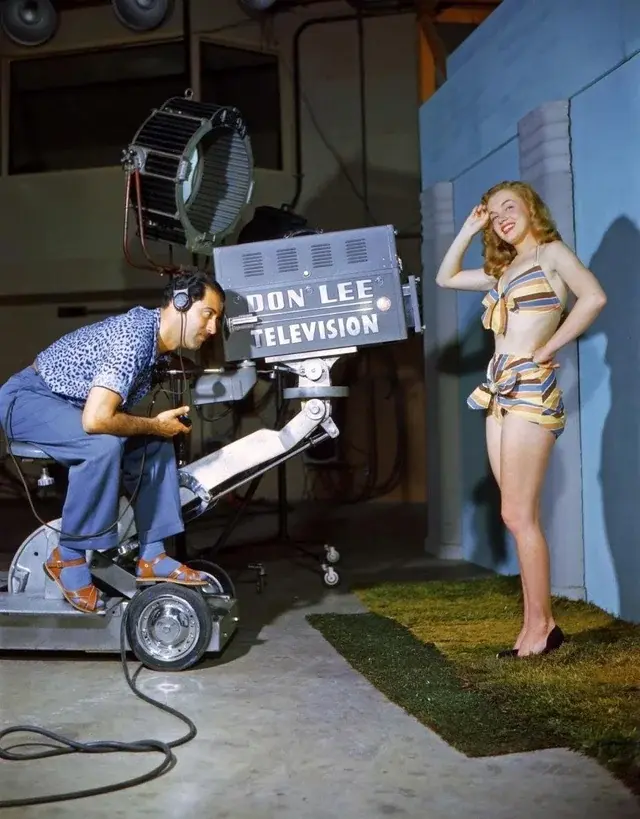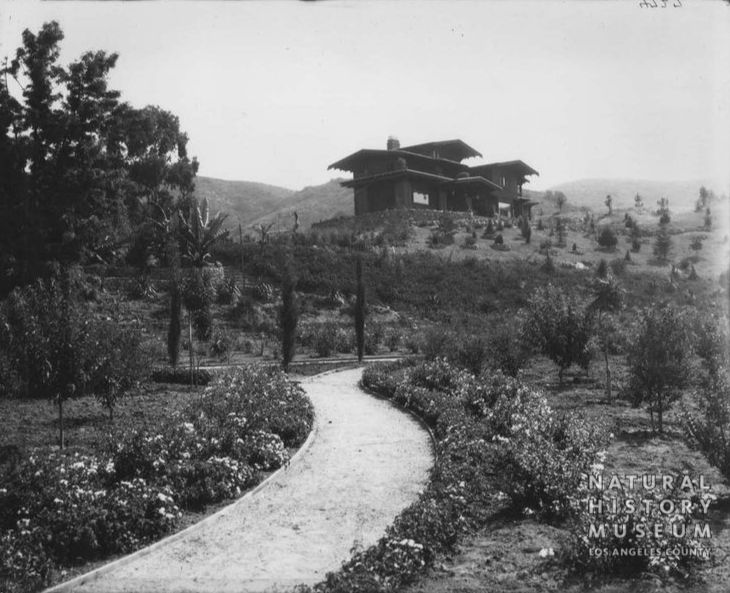Why the Hollywood Sign Once Had a Pool
- KP
- Jun 30
- 5 min read
The Hollywood sign might be a film industry landmark, but for a few short years in the 1940s it was a beacon for early television.

In 1941, the Don Lee Broadcasting System moved its experimental television station, W6XAO, from downtown Los Angeles to the mount of Hollywoodland, 1,700 feet above sea level. The site was chosen specifically for its elevation: When combined with a 300-foot transmission tower, the tele-station had 2,000 feet of vertical clearance—enough to double its reach from 30 to 60 miles away.
At the time, there were an estimated 500 homes with television “receiving sets” in all of Southern California.

The first broadcasting center built exclusively for television, W6XAO was no different than a motion picture set: two large studios with multiple cameras (for close-up and long shots), lighting systems, boom mikes, dressing rooms, and a makeup department (managed by a Max Factor cosmetics expert). But for television’s sake, the three-story building was sheathed in copper to prevent any outside electrical disturbances.
W6XAO’s debut broadcast since moving to Mount Lee was the Hollywood Bowl’s Easter Sunrise Service on April 13,1941, the first time the iconic event was ever televised. In addition to in-house productions of dramatic serials and musical productions, the station also concentrated on live sporting events, like boxing and wrestling, filmed at Hollywood Legion Stadium on El Centro Avenue. Images captured by the Don Lee cameras were short-waved to Mount Lee’s steel antenna four miles away and broadcast on W6XAO’s channel, No. 1.

It was all the genius of Harry R. Lubcke, director of the Don Lee Broadcasting System and a gifted electrical engineer who had been discovered by Lee, a Cadillac dealer turned radio entrepreneur, in 1930. The following year, the FCC granted Lee a license for experimental television and W6XAO began broadcasting a one-hour program six days a week.
In 1932, Lubcke made history when W6XAO transmitted a moving image to a receiving set aboard an airplane flying 3,000 feet over Burbank. It was made possible by a cathode-ray vacuum tube, developed by Lubcke, which received the broadcast impulses from the station 10 miles away and automatically synchronized the image in the tube.
For this experiment, Lubcke showed the nine other Western Air Express passengers a five-minute clip of Loretta Young in Week-End Marriage.
Despite the headline-making success, Lubcke acknowledged it would still take another five years of development to make his invention practical for everyday use.

Don Lee died unexpectedly in 1934, leaving the broadcasting company’s future in the capable hands of his 27-year-old son Thomas. The two had shared a passion for the “infant science” of television and Thomas dedicated himself to continuing W6XAO’s development.
In 1937, five years after Lubcke’s sky-high experiment, Thomas Lee purchased the 20-acre Hollywoodland hilltop—originally intended for Mack Sennett’s estate—and got the necessary permits from Los Angeles City Council to build a state-of-the-art broadcasting center.
At the entrance of the tele-station (directly above the “N” in the Hollywoodland sign), a swimming pool with diving board was installed for aquatic telecasts. Thomas Lee, president of the company, had the ingenuity to broadcast bathing beauties posing with advertising products as cut-ins during W6XAO’s regular programming.

He hoped it would be Don Lee’s moneymaker, after the company had invested $500,000 on television experimentation—while not turning a profit—for a decade.
The Federal Communications Commission (FCC) had blocked all tele-stations from monetizing their programming until standard telecasting equipment could be manufactured and coincide with home receiving sets, which was finally accomplished in 1941. That year, W6XAO became the first station west of Chicago to be granted a commercial license by the FCC.

Just six months later, the December 7, 1941 attack on Pearl Harbor forced W6XAO to scale back its programming schedule, from six days a week to only two hours on alternate Monday nights. When the United States entered World War II, Mount Lee’s flat surface was identified as a landing field for helicopters. In 1943, the property also served as an Army camp.
Post-war America looked at television in a different light. Now, it was considered a dynamic industry expected to propel the economy, creating more than 1 million jobs from coast to coast (manufacturing, sales, service). The average cost of a television in 1945: $100, equivalent to $1,650 in 2025.
In 1946, W6XAO—one of only nine licensed tele-stations in the country—was renamed KTSL (“K” identifying it as a western station and “TSL” for Thomas Stewart Lee) and moved part of its operations to a higher elevation: Mount Wilson, where a $250,000 facility was constructed for television and radio.
Additionally, the Don Lee Broadcast Company opened an uber-modern Hollywood headquarters, designed by architect Claud Beelman, at 1313 North Vine Street in 1948. The largest studio built for simultaneous television and radio transmission at the time, the 118,000-square-foot complex featured 14 broadcast studios, including four large sound stages with auditorium seating for live audiences. As a nod to its namesake founder, the latest Cadillac models available at Don Lee’s Los Angeles dealerships were displayed in remote showrooms at the north and south corners of the building.
As the Don Lee Company expanded, its leader Thomas Lee personally declined. In September 1948, the $9.5 million auto-radio heir was deemed mentally ill (as a result of insomnia) and appointed legal guardians as he sought treatment in a Pasadena sanitarium.
On January 14, 1950, while at the Pellissier Building (adjoining the Wiltern Theatre) for a dental appointment, 43-year-old Thomas instead headed to the 12th floor and jumped to his death. At the start of his funeral, all four stations of the Don Lee Broadcasting System held a minute of silence.

As extended family members fought over his will in probate court, Thomas Lee’s entire estate was sold. General Tire and Rubber Company paid $12.32 million for a broadcasting empire including Mount Lee, five radio stations, one television station (KTSL), and contracts with 41 other radio stations. Immediately, KTSL was purchased by CBS and renamed KNXT (now KCBS, branded as CBS Los Angeles).

As for Mount Lee, in 1952 the State Office of Civil Defense leased the property and remodeled the studio into administrative offices and a control room large enough to accommodate staff leaders of all services. Four years later, the City of Los Angeles purchased the site for $200,000 to serve as a municipal communication headquarters.
Judging by aerial photos, it seems Don Lee’s 300-foot tower is still up there, however the original building was either demolished or remodeled beyond recognition (see below).
Five miles south of Mount Lee, the Vine Street radio-television headquarters is now a film archive. Since 2002, it’s been the Academy’s Pickford Center for Motion Picture Study and contains over 230,000 items, including every Oscar winner in the Best Picture and Documentary categories.













Comments